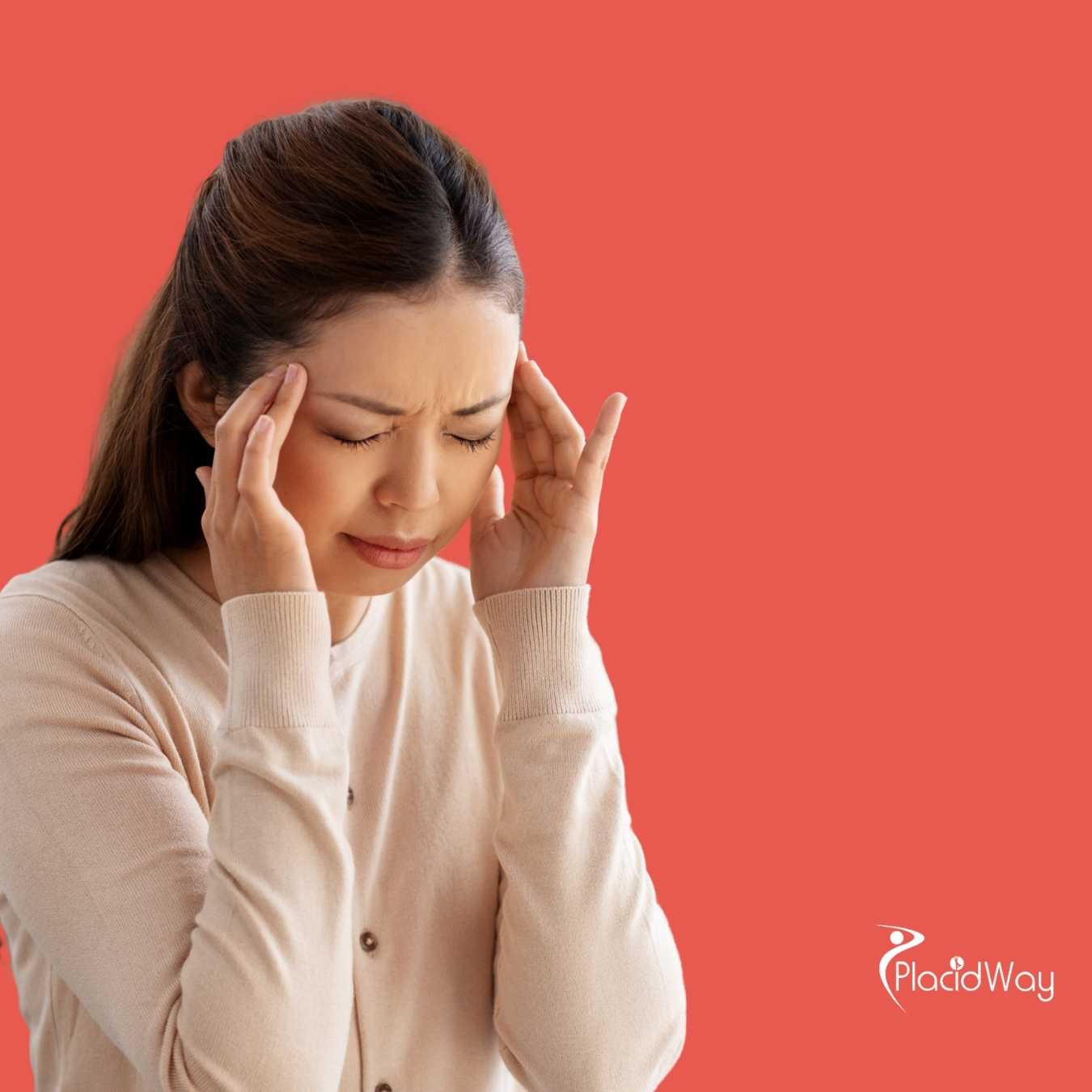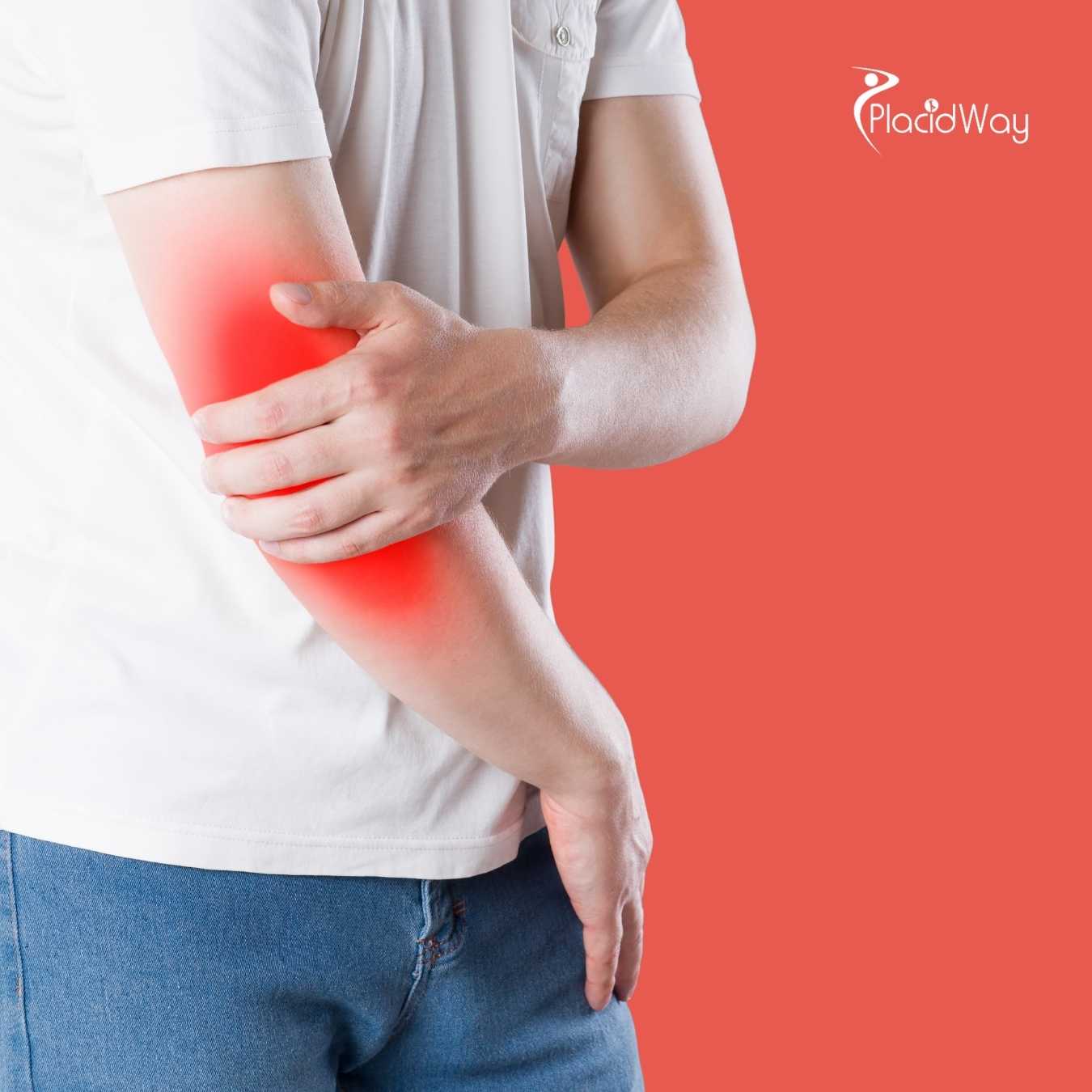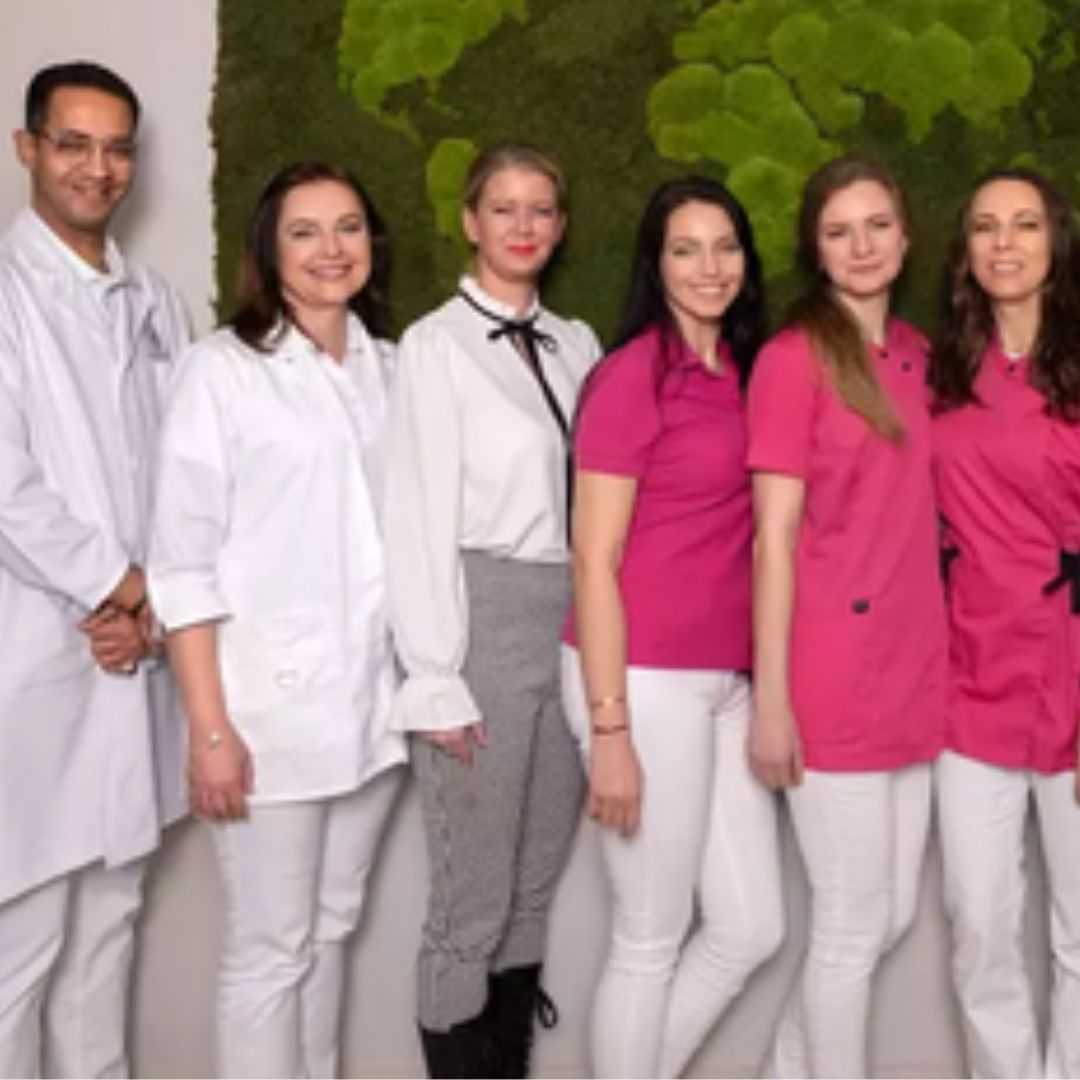
Unlocking New Hope: Stem Cell Treatment for Parkinson's Disease
Living with Parkinson's Disease can feel like an uphill battle, marked by tremors, stiffness, and a gradual loss of control over one's body. For many, the relentless progression of this neurological condition leaves them searching for advanced solutions beyond traditional symptom management. If you're exploring "new Parkinson's treatments," "Parkinson's disease stem cell therapy," or "regenerative medicine for Parkinson's," you're not alone. Patients worldwide are turning their attention to stem cell treatments as a beacon of hope.
Stem cell treatment for Parkinson's is an innovative, albeit largely experimental, approach that harnesses the body's own reparative power or introduces new, healthy cells to combat the disease's effects. The core idea is to replace the dopamine-producing neurons that progressively die in Parkinson's patients, or to create an environment that protects existing neurons and reduces inflammation. While it's not yet a definitive cure, initial research and ongoing clinical trials offer tantalizing possibilities for slowing progression, reducing symptoms, and significantly enhancing the quality of life for those affected.
Imagine a future where the tremors lessen, the stiffness eases, and daily tasks become less challenging. This is the promise that stem cell therapy holds. For many, the journey to find this hope leads them to explore specialized clinics and cutting-edge treatments available in other countries, seeking expertise and affordability that might not be readily accessible at home. This guide will walk you through everything you need to know about stem cell treatment for Parkinson's, from understanding the disease itself to navigating your options for care abroad.
What Are the Symptoms of Parkinson's Disease?
Parkinson's Disease is often recognized by its hallmark motor symptoms, but its reach extends far beyond them, impacting various aspects of a patient's life. Understanding these signs is crucial for early diagnosis and intervention. Many people search for "early signs of Parkinson's" or "what does Parkinson's look like."
- Tremor: This is the most well-known symptom, often beginning in a limb, especially at rest. It's typically a "pill-rolling" tremor, where the thumb and forefinger rub together.
- Bradykinesia (Slowness of Movement): This makes simple tasks difficult and time-consuming. You might notice a shuffling gait, difficulty initiating movement, or a reduced ability to perform repetitive motions. Tasks like buttoning a shirt or cutting food become challenging.
- Rigidity: Muscle stiffness can occur in any part of your body, leading to pain and limiting your range of motion. It often feels like your muscles are perpetually contracted.
- Postural Instability: As the disease progresses, balance issues become prominent, leading to a tendency to fall. This can be one of the most debilitating "Parkinson's symptoms" impacting daily safety.
- Non-Motor Symptoms: These can often precede motor symptoms by years and include loss of smell (anosmia), sleep disorders (like REM sleep behavior disorder), constipation, depression, anxiety, fatigue, and cognitive changes. Recognizing these "non-motor Parkinson's symptoms" is vital for comprehensive care.
If you or a loved one are experiencing several of these symptoms, especially if they are worsening, seeking medical evaluation is important to determine the cause and discuss potential treatments like "Parkinson's disease new treatments."
What Are the Causes and Risk Factors of Parkinson's Disease?
The precise cause of Parkinson's Disease remains a complex puzzle, but scientists have identified several key factors contributing to its development. Patients often search for "what causes Parkinson's" or "risk factors for Parkinson's."
- Loss of Dopamine-Producing Neurons: The fundamental problem in Parkinson's is the progressive degeneration of neurons in a specific area of the brain called the substantia nigra. These neurons produce dopamine, a crucial neurotransmitter that helps regulate movement. When dopamine levels drop significantly, motor symptoms emerge.
- Lewy Bodies: Clumps of specific proteins called alpha-synuclein, known as Lewy bodies, are found in the brain cells of Parkinson's patients. These are believed to be instrumental in the pathology of the disease.
- Genetic Factors: While most cases of Parkinson's are not inherited, certain genetic mutations have been linked to an increased risk of the disease. If you have a close relative with Parkinson's, your risk might be slightly higher. People often inquire about "Parkinson's genetic link."
- Environmental Triggers: Exposure to certain toxins, such as pesticides and herbicides, has been suggested as a potential risk factor. Head injuries, especially repeated ones, are also being investigated.
- Age: Age is the greatest risk factor. Parkinson's typically begins in middle or late life, and the risk increases substantially with age.
- Gender: Men are more likely to develop Parkinson's disease than women.
It's important to remember that having a risk factor doesn't mean you will develop the disease, nor does lacking risk factors guarantee immunity. Research into "preventing Parkinson's" is ongoing, but currently, there's no proven way to prevent the condition.
What Types of Stem Cell Treatments Are Available for Parkinson's?
Stem cell research for Parkinson's is a rapidly evolving field, exploring several different types of stem cells, each with unique potential. Patients frequently ask, "What type of stem cells are used for Parkinson's?" or "Are all stem cell therapies the same?"
- Neural Stem Cells (NSCs): These are precursor cells that can differentiate into various types of neural cells, including dopamine-producing neurons. The goal is to implant these cells directly into the brain to replace the lost neurons in the substantia nigra. This is often considered the most direct approach to addressing the root cause of motor symptoms.
- Induced Pluripotent Stem Cells (iPSCs): These are adult cells (like skin cells) that have been genetically reprogrammed to an embryonic-like pluripotent state. They can then be directed to become dopamine-producing neurons. A major advantage of iPSCs is that they can be derived from the patient's own body, reducing the risk of immune rejection. This is a significant area of research for "personalized stem cell therapy Parkinson's."
- Mesenchymal Stem Cells (MSCs): Found in bone marrow, adipose tissue, and umbilical cord blood, MSCs are multipotent and primarily known for their immunomodulatory, anti-inflammatory, and neurotrophic (nerve-feeding) properties. While they don't directly replace dopamine neurons, MSCs are thought to create a more favorable environment for existing neurons, potentially slowing degeneration and improving symptom management. They are often administered intravenously or intrathecally. Patients might search for "MSCs for Parkinson's" or "umbilical cord stem cells Parkinson's."
It's crucial to distinguish between therapies offered in regulated clinical trials and those offered by unregulated clinics. While MSCs are widely available in some medical tourism destinations, therapies involving NSCs and iPSCs are still predominantly within the realm of rigorous clinical research due to their complex nature and potential risks.
Who is Eligible for Stem Cell Treatment for Parkinson's?
Determining eligibility for stem cell treatment is a rigorous process, as not everyone with Parkinson's is a suitable candidate, especially for experimental therapies. Common patient questions include "Am I a candidate for stem cell therapy for Parkinson's?" or "What are the requirements for Parkinson's stem cell treatment?"
- Diagnosis Confirmation: Patients must have a confirmed diagnosis of idiopathic Parkinson's Disease. Other forms of parkinsonism are often excluded.
- Disease Stage: Eligibility often depends on the stage of the disease. Some trials target earlier stages, while others might consider more advanced cases with specific symptom profiles.
- Overall Health: Candidates generally need to be in good overall health, without significant co-existing medical conditions (e.g., severe heart disease, active cancer, uncontrolled diabetes) that could complicate the procedure or recovery.
- Age: While not always an absolute barrier, age can be a factor, with many clinics and trials preferring patients within a specific age range for optimal safety and efficacy.
- Medication Response: Some protocols might look for patients who have had a clear positive response to standard dopaminergic medications, while others might focus on those who are experiencing significant "on-off" fluctuations or dyskinesias.
- Realistic Expectations: Patients must understand that stem cell therapy is not a guaranteed cure and manage their expectations regarding potential outcomes and risks.
A comprehensive medical review, including detailed neurological assessments, imaging (MRI, PET scans), blood tests, and a thorough discussion with a specialist, is always required to determine individual suitability.
What is the Recovery Time and What Can I Expect After Stem Cell Treatment?
Understanding the recovery process and realistic expectations is crucial for anyone considering stem cell treatment for Parkinson's. Patients often ask, "How long is recovery after stem cell Parkinson's?" or "What happens after stem cell therapy for Parkinson's?"
- Immediate Post-Procedure:
- For IV/Intrathecal MSC treatments: Typically, patients experience minimal downtime. You might feel tired or have mild flu-like symptoms for a day or two. Most can resume light activities within a few days.
- For Intracerebral (brain) procedures (e.g., neural stem cells in clinical trials): This is a more invasive surgical procedure. Patients will require a hospital stay, often a few days to a week, for monitoring. Recovery will involve managing surgical site discomfort and a gradual return to normal activities.
- Long-Term Expectations:
- Gradual Improvement: Unlike a quick fix, the benefits of stem cell therapy, if any, are usually gradual. It can take weeks to several months for the cells to integrate, differentiate (if applicable), and exert their therapeutic effects. Patients should not expect immediate dramatic changes.
- Symptom Management, Not Cure: It's important to remember that current stem cell therapies for Parkinson's are generally aimed at managing symptoms, slowing progression, or improving quality of life, rather than providing a complete cure.
- Rehabilitation: Post-treatment, continued physical therapy, occupational therapy, and speech therapy are often recommended to maximize potential improvements and maintain functional abilities.
- Follow-up: Regular follow-up with neurologists and the treating clinic is essential to monitor progress and adjust other medications as needed.
As one patient described, "It wasn't like flipping a switch. It was more like the dimmer slowly turning up over several months. My tremors didn't vanish, but they became more manageable, and I felt a bit more stable." This analogy highlights the often subtle, yet meaningful, improvements observed.
What Are the Risks and Side Effects of Stem Cell Treatment for Parkinson's?
Like any medical procedure, stem cell treatment, especially for a complex condition like Parkinson's, carries potential risks and side effects. It's vital for patients searching for "stem cell Parkinson's safety" or "side effects of stem cell therapy" to be fully informed.
- Infection: Any invasive procedure carries a risk of infection at the injection or surgical site.
- Immune Reaction/Rejection: If allogeneic (donor) cells are used, there's a risk of the recipient's immune system reacting to or rejecting the cells. While MSCs have low immunogenicity, it's still a consideration.
- Tumor Formation (Teratoma): A rare but serious concern, particularly with embryonic stem cells or improperly differentiated iPSCs, is the formation of teratomas (tumors containing various tissue types). This is why research protocols are extremely stringent.
- Complications from Delivery Method:
- Intravenous (IV) Infusion: Generally low risk, similar to a standard IV drip.
- Intrathecal (Spinal) Injection: Risks include headache, bleeding, or infection at the injection site.
- Intracerebral (Brain) Surgery: This is the most invasive method and carries risks associated with brain surgery, such as bleeding, stroke, infection, or damage to brain tissue.
- Exacerbation of Symptoms: In some rare cases, symptoms might temporarily worsen or new neurological symptoms could appear.
- Lack of Efficacy: The treatment might simply not work or provide the desired benefits, leading to significant financial and emotional investment without improvement.
- Unregulated Clinics: A major risk when seeking treatment abroad is engaging with clinics offering unproven or unregulated therapies. These might use unsafe practices, unverified cells, or make unsubstantiated claims, leading to potential harm. Always prioritize clinics adhering to international medical standards.
A thorough discussion of these risks with medical professionals and ensuring the clinic follows ethical and scientific guidelines is paramount.
Worldwide Cost Comparison for Stem Cell Treatment for Parkinson's
Cost is a significant factor for many patients considering advanced treatments like stem cell therapy. Patients frequently search for "cost of stem cell treatment for Parkinson's" or "affordable Parkinson's stem cell therapy abroad." It's important to understand that prices can vary dramatically based on several factors:
- Type of Stem Cells Used: MSCs (autologous or allogeneic) are generally more widely available and may be less expensive than highly specialized neural stem cell or iPSC therapies (which are mostly in clinical trial settings).
- Number of Treatments/Infusions: A single infusion will naturally cost less than a protocol involving multiple treatments over several weeks or months.
- Clinic Reputation and Location: Highly renowned clinics in technologically advanced countries often command higher prices.
- Inclusion of Ancillary Services: Some packages include consultations, diagnostics, post-treatment care, and even accommodation, while others only cover the procedure itself.
- Regulatory Status: Treatments offered outside of rigorous clinical trials, particularly those using MSCs, can have varied pricing structures.
Here's a general comparison of estimated costs (highly variable and subject to change):
| Country/Region | Estimated Cost Range (USD) | Typical Inclusions |
|---|---|---|
| United States / Western Europe | $25,000 - $100,000+ (mostly clinical trials, highly specialized centers) | Advanced diagnostics, specialized cell processing, hospital stay (for surgical), follow-up. |
| Mexico / Costa Rica | $10,000 - $30,000 (often MSC-based therapies) | Consultation, cell preparation, 1-3 infusions, some basic follow-up. |
| Turkey | $12,000 - $28,000 (often MSC-based therapies) | Consultation, cell preparation, 1-3 infusions, sometimes initial rehabilitation. |
| Asia (e.g., Thailand, South Korea) | $15,000 - $40,000+ (mix of MSC and some experimental protocols) | Consultation, cell preparation, multiple infusions, advanced diagnostics. |
Always request a detailed quote that outlines all included services and potential additional costs, especially when considering "stem cell treatment abroad price."
Why Consider Stem Cell Treatment for Parkinson's Abroad?
The decision to seek medical care outside one's home country, often referred to as "medical tourism," is driven by a combination of factors, particularly for cutting-edge treatments like stem cell therapy for Parkinson's. Many individuals research "Parkinson's treatment abroad" or "medical tourism for Parkinson's."
- Access to Advanced Therapies: Some countries and clinics offer specific stem cell protocols or have more liberal regulations regarding certain types of stem cell therapies that may still be in early experimental stages or unavailable in a patient's home country.
- Cost-Effectiveness: As seen in the cost comparison, the price of stem cell treatment in some international destinations can be significantly lower than in Western countries, even when factoring in travel and accommodation. This makes advanced care accessible to more patients.
- Shorter Waiting Times: In countries with universal healthcare systems, waiting lists for specialized treatments can be long. Traveling abroad often means faster access to consultations and treatment initiation.
- Combining Treatment with Travel: For some, the opportunity to recover in a pleasant, foreign environment, combining medical care with a change of scenery, is appealing.
- Privacy and Anonymity: Some patients prefer the discretion that comes with receiving treatment away from their local community.
- Specialized Expertise: Certain clinics abroad have developed a niche expertise in specific stem cell applications for neurological conditions, attracting patients from around the globe.
As one patient from the UK shared, "The cost difference was simply staggering. For the price of treatment at home, I was able to get a comprehensive program in Mexico, including travel, and still saved a substantial amount. It opened up an option I didn't think I had."
Which Countries Offer the Best Value for Stem Cell Parkinson's Treatment?
When seeking "best countries for stem cell therapy for Parkinson's" or "top clinics for Parkinson's abroad," patients are looking for a blend of quality, safety, and affordability. Several countries have emerged as leaders in medical tourism for stem cell treatments:
- Mexico: Particularly cities like Tijuana, Guadalajara, and Cancun, have a growing number of clinics offering various stem cell therapies, often at a fraction of the cost found in the US. They are popular for their proximity to the US and well-developed medical tourism infrastructure.
- Costa Rica: Known for its natural beauty and high-quality healthcare, Costa Rica offers reputable stem cell clinics that attract international patients seeking treatments in a serene environment.
- Turkey: With its strategic location between Europe and Asia, Turkey has invested heavily in its healthcare sector, boasting modern hospitals and clinics, often at competitive prices. Many clinics adhere to international accreditation standards.
- Thailand: A long-standing medical tourism hub, Thailand provides a wide range of medical services, including stem cell therapies, combining advanced technology with excellent patient care and hospitality.
- South Korea: Renowned for its technological advancements and cutting-edge research, South Korea offers highly sophisticated stem cell treatments, although often at a higher price point than other Asian destinations.
- Caribbean Nations (e.g., Cayman Islands, Bahamas): These islands are emerging as destinations for regenerative medicine, often catering to a clientele seeking privacy and exclusive care.
When evaluating these options, it's crucial to research the specific clinics, their accreditations, and the types of stem cell therapies they offer, ensuring they align with established scientific and ethical guidelines. Always verify the credentials of the doctors and the facility.
What to Expect When Traveling for Stem Cell Treatment Abroad?
Embarking on a journey for medical treatment in a foreign country requires careful planning and knowing what to expect can significantly ease the process. Patients often search for "how to travel for Parkinson's treatment" or "medical tourism guide for stem cells."
- Initial Consultation and Planning:
- Remote Consultation: Most reputable clinics offer initial consultations via video call or email, where you can share your medical records and discuss your case.
- Personalized Treatment Plan: Based on your evaluation, a customized treatment plan, including the type of stem cells, number of sessions, and estimated cost, will be provided.
- Travel Logistics: You'll need to arrange flights, accommodation, and potentially local transportation. Many clinics or medical tourism facilitators can assist with these arrangements.
- Arrival and Pre-Treatment:
- Airport Transfer: Often, clinics arrange for airport pick-up and drop-off.
- In-Person Assessment: Upon arrival, you'll undergo thorough in-person medical evaluations, blood tests, and imaging to confirm your eligibility and fine-tune the treatment plan.
- Interpreter Services: If there's a language barrier, ensure the clinic provides professional interpreter services.
- During Treatment:
- Procedure Day(s): Depending on the type of therapy, the procedure might be a single day or spread over several days. You'll be closely monitored.
- Support: Many clinics offer excellent patient support, ensuring comfort and addressing any concerns.
- Post-Treatment and Departure:
- Recovery: As discussed, recovery can vary. For IV/intrathecal treatments, you might be able to travel back relatively soon. For more invasive procedures, a longer local stay might be recommended.
- Follow-up Instructions: You'll receive clear instructions for post-treatment care and follow-up, which may include remote consultations or local neurologist visits.
- Medical Records: Ensure you receive all relevant medical records for your ongoing care back home.
Using a reputable medical tourism facilitator like PlacidWay can streamline this complex process, helping you choose the right clinic and manage all logistics.
How to Ensure Safety and Quality for Stem Cell Treatment Abroad?
The quest for effective treatment often leads patients to look beyond borders, but ensuring safety and quality is paramount when considering "safe stem cell therapy Parkinson's abroad" or "reputable stem cell clinics."
- Verify Accreditations: Look for international accreditations like Joint Commission International (JCI) or other globally recognized healthcare quality standards. These indicate that the facility meets stringent international benchmarks for patient care and safety.
- Research Doctor's Credentials: Ensure the physicians and medical staff are board-certified, experienced in neurology and regenerative medicine, and have a strong track record. Don't hesitate to ask for their CVs and professional affiliations.
- Understand the Stem Cell Source and Processing:
- Source: Ask about the origin of the stem cells (e.g., autologous from your own body, allogeneic from screened donors, umbilical cord, adipose tissue).
- Processing: Inquire about their lab facilities. Are they GMP (Good Manufacturing Practice) certified? How are the cells isolated, expanded, and quality-controlled? This is crucial for efficacy and safety.
- Regulatory Oversight: Understand the regulatory environment of the country you're considering. Is the stem cell therapy legally approved and regulated, or is it offered under less stringent guidelines? Transparency is key.
- Ask Detailed Questions:
- What are the potential risks specific to my case?
- What are the expected outcomes? (Be wary of clinics guaranteeing cures.)
- What is the long-term follow-up plan?
- How do you handle complications?
- Read Patient Testimonials and Reviews: While not a sole indicator, real patient experiences can offer valuable insights into the clinic's quality of care, communication, and overall patient satisfaction. Look for balanced reviews.
- Avoid "Miracle Cures": Be extremely cautious of clinics that promise a "cure" for Parkinson's, make exaggerated claims, or offer treatments without a thorough medical evaluation. Stem cell therapy for Parkinson's is still largely experimental or aimed at significant symptom management, not eradication.
By conducting thorough due diligence, you can significantly mitigate risks and choose a safe, high-quality medical tourism destination for your Parkinson's treatment.
What Are Patient Success Stories from Abroad for Parkinson's Stem Cell Treatment?
For many contemplating stem cell treatment, especially abroad, hearing about the experiences of others can be incredibly reassuring and informative. Patients frequently search for "Parkinson's stem cell treatment testimonials" or "real stories of stem cell Parkinson's." While "success" is highly individual and depends on disease severity, type of treatment, and patient expectations, here are common themes from patient experiences:
- Reduced Motor Symptoms: Many patients report a noticeable reduction in tremors, rigidity, and bradykinesia. For example, "David, a 62-year-old from Canada, traveled to a clinic in Mexico for MSC treatment. After three months, his wife noted his morning stiffness was significantly less, and he could tie his shoelaces without assistance – something he hadn't done in years."
- Improved Balance and Gait: Enhancements in balance and a more stable, less shuffling gait are frequently cited, contributing significantly to a reduced risk of falls and increased confidence. "Maria, 58, from Spain, noticed her walking became smoother after her treatment in Turkey. She felt less afraid of falling and could enjoy short walks again."
- Better Non-Motor Symptoms: Beyond motor improvements, patients often experience better sleep quality, reduced fatigue, and improvements in mood, anxiety, and even cognitive clarity. "John, a 70-year-old American, found his debilitating insomnia, a long-standing Parkinson's symptom, dramatically improved after his stem cell therapy in Costa Rica, leading to a much better quality of life."
- Enhanced Quality of Life: Overall, the goal is to improve daily functioning and independence. Even subtle improvements can have a profound impact. "Sarah, 65, from Australia, said her stem cell treatment in Thailand didn't 'cure' her Parkinson's, but it made her symptoms manageable enough that she could enjoy playing with her grandchildren again, which felt like a huge success."
These stories highlight that while results vary, stem cell therapy can offer significant improvements in specific symptoms and overall well-being. It is crucial to remember that these are personal anecdotes and not scientific evidence of efficacy or guarantees of similar outcomes. Always approach with realistic expectations and under the guidance of qualified medical professionals.
Take the Next Step with PlacidWay
Ready to explore treatment options abroad? Discover top clinics, compare prices, and get a free quote tailored to your needs with PlacidWay.
Stem Cell Therapy Abroad










Share this listing